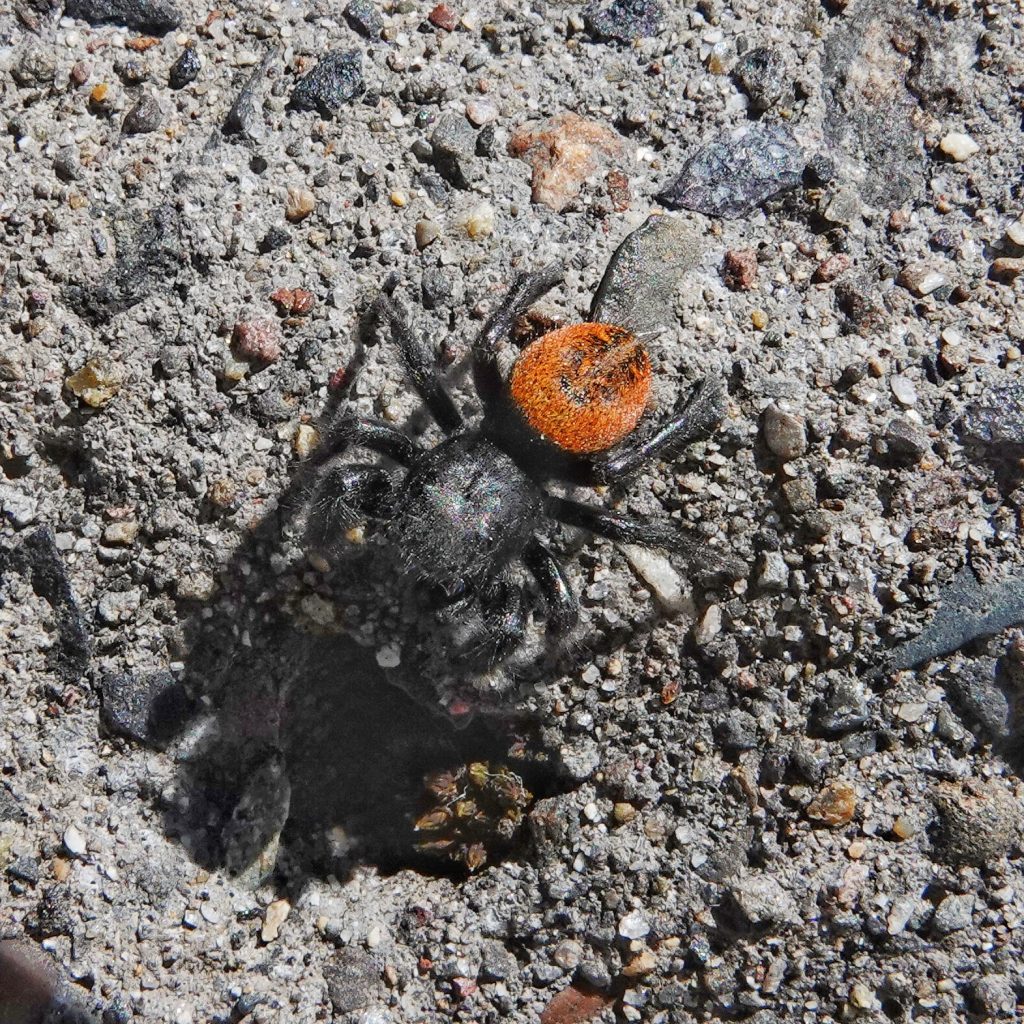
I don’t see these beautiful salticid spiders (who go by the common names Johnson’s jumper and red-backed jumper, although the latter has fallen out of favor because it can be confused with the name of the highly dangerous redback spider, an Australian native closely related to our black widows) nearly as often as I wish I did, although they are said to be quite common. When I see them they are usually on man made rock walls in otherwise natural, forested settings, but I’ve also seen them in shrub steppe whilst crawling on hands and knees searching for lichens.
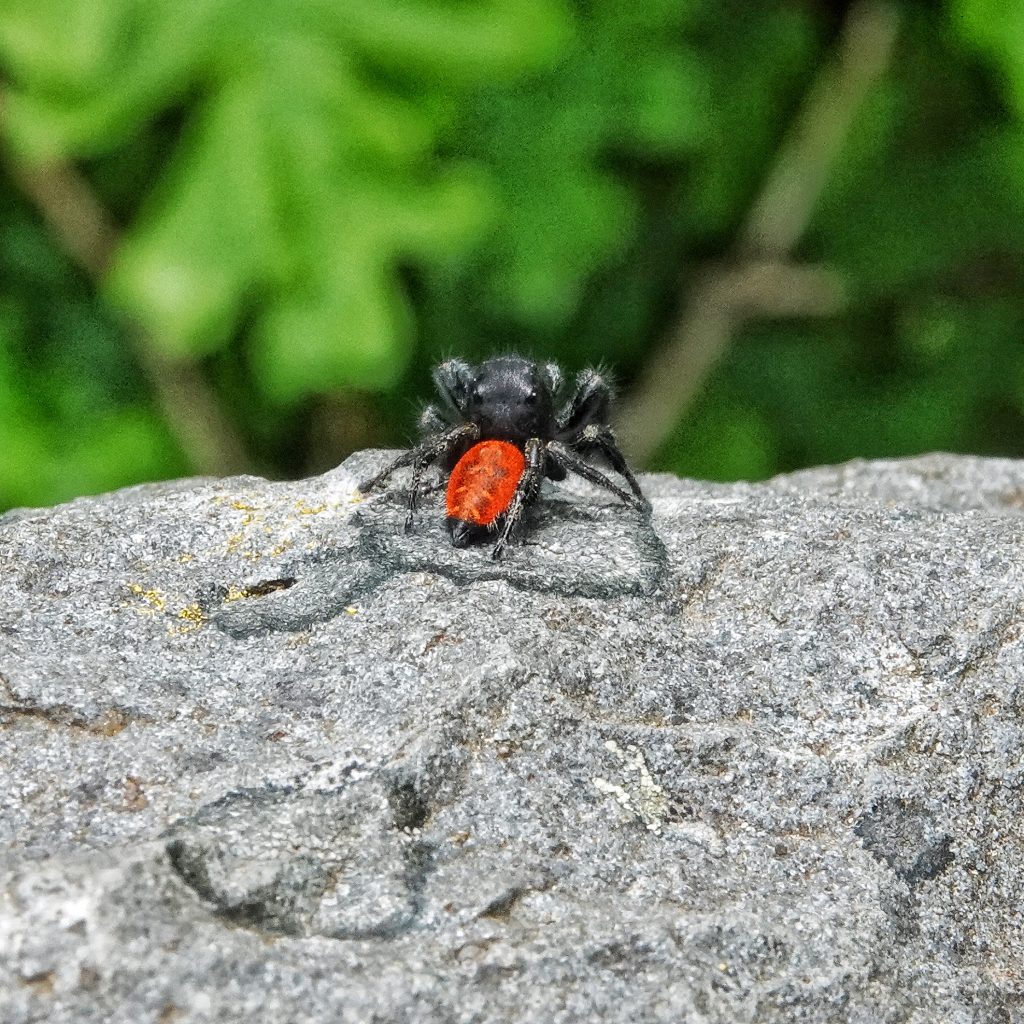
I really don’t worry about spider bites, and certainly do not wish to increase anyone’s fear of them, but since I ran into a variation of this message three times during my literature search, I thought I’d share BugGuide’s version- “Not harmful to humans, although like all spiders it will inflict a painful bite if provoked, and this species is reported to be more aggressive than other jumpers.” Species Phidippus johnsoni – BugGuide.Net. That said, I’ll continue to be rationally respectful, rather than irrationally fearful, of the bite of these and other spiders, as I am with the sting of scorpions and Hymenoptera.
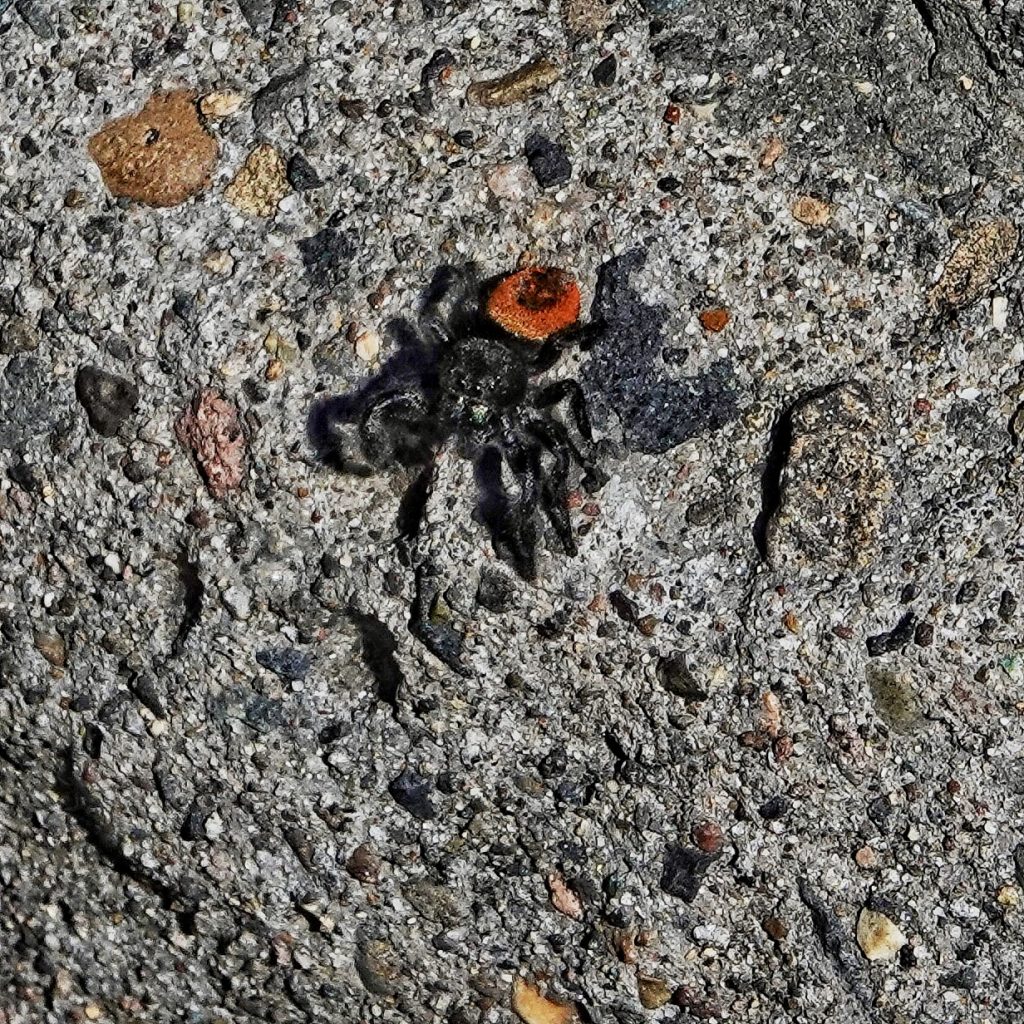
Description– “ Body length 9mm-14mm…Black carapace; abdomen of male solid bright red; abdomen of female red with broad, black midline, and often a thin, U-shaped, creamy stripe along front edge; legs of both sexes black with small tufts of white hair; pedipalps black; chelicerae metallic bluish-green.” Merrill Peterson; 2018; “Pacific Northwest Insects”.
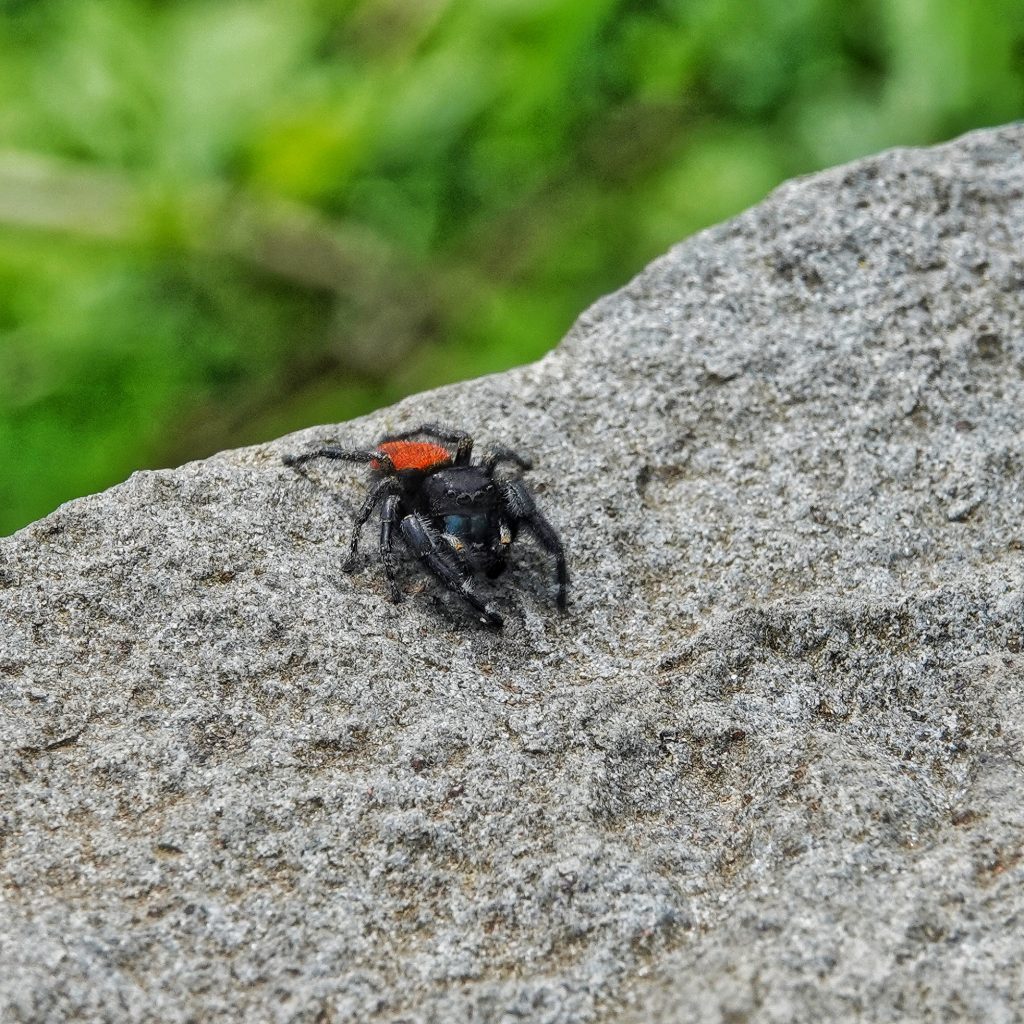
Similar species– “P. clarus male has abdomen patterned like female P. johnsoni (P. clarus female has mostly brown body). P. borealis (NE WA to W MT) has less red on abdomen. P. aoacheanus has red carapace and abdomen. P. nikites has yellowish orange carapace and abdomen.” Merrill Peterson; 2018; “Pacific Northwest Insects”.
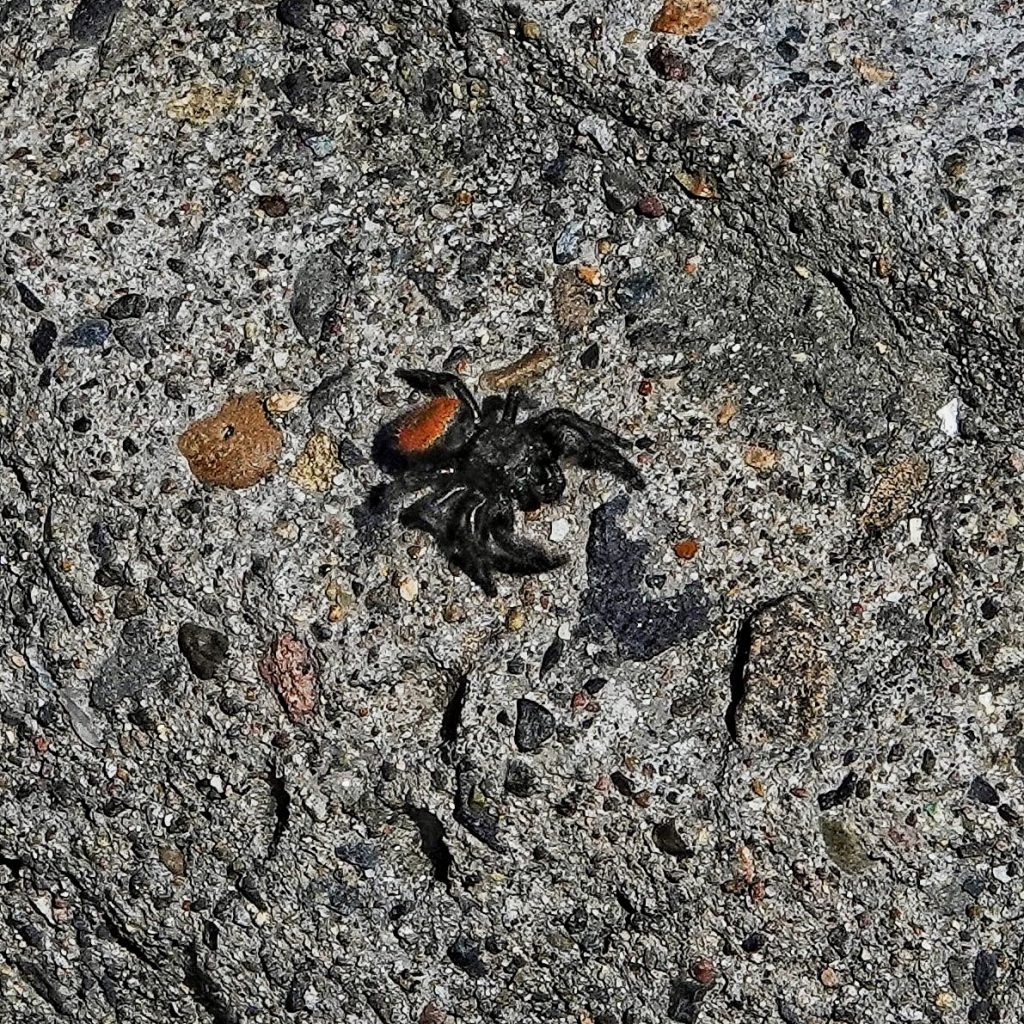
Habitat– “Perhaps the [Phidippus] species occurring in the greatest diversity of habitats, P. johnsoni has been found from coastal beaches to alpine meadows, from coastal sage to chaparral to coniferous forest, and from sea level to 12,000′ elevation. Most inland collection sites are at moderately high elevation.” GB Edwards; 2004; “Revision of the Jumping Spiders of the Genus Phidippus”
Range– Western North America; region wide in the PNW

Eats– “Insects, spiders and possibly other small invertebrates and vertebrates as well. P. regius has been documented eating a tree frog and an anole in Florida.” Genus Phidippus – BugGuide.Net
Eaten by-Probably preyed upon by insectivores of all classes, and parasites and parasitoids probably include nematodes, mites, and several species of wasps and flies, but I can find nothing specific to this species.
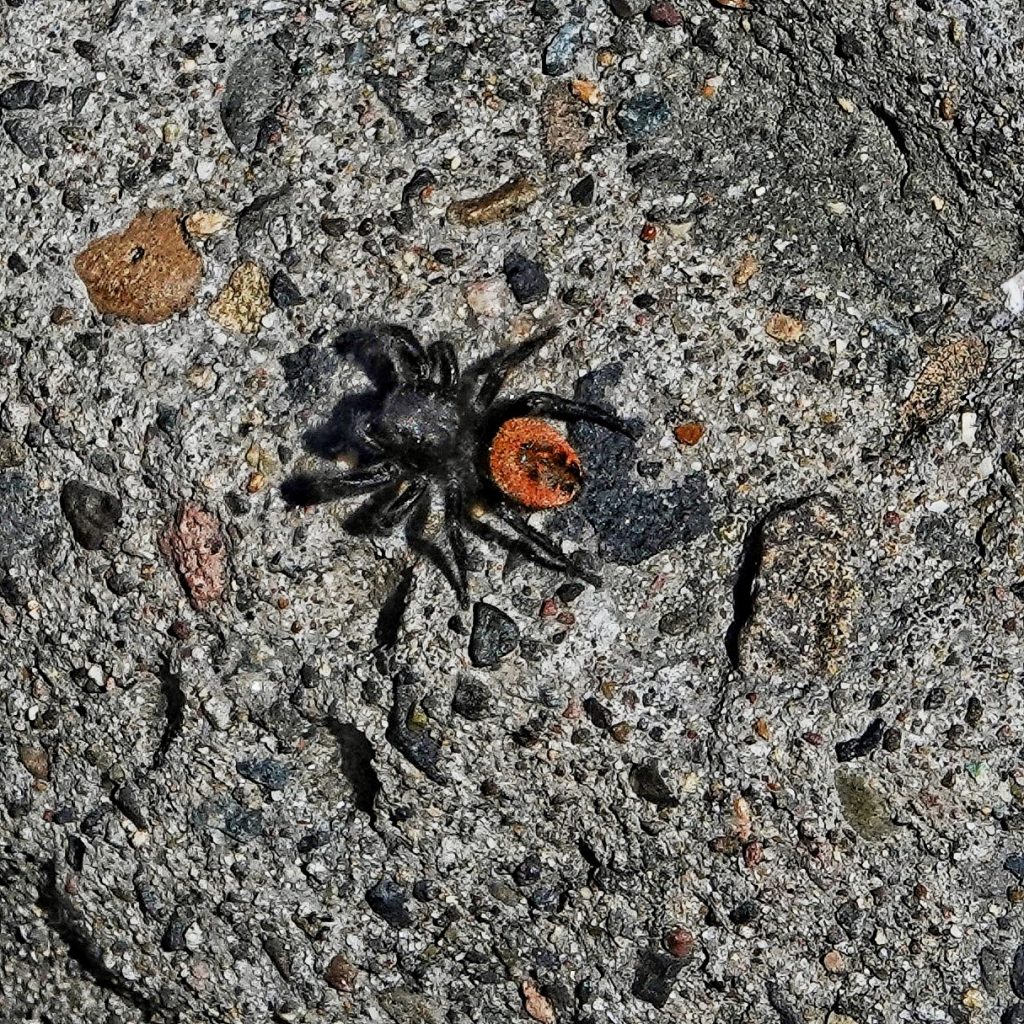
Adults active– “It is found throughout the year, although there is a peak of males in spring.” GB Edwards; 2004; “Revision of the Jumping Spiders of the Genus Phidippus”
Life cycle– “Eggsacs are made under rocks and bark of logs.” GB Edwards; 2004; “Revision of the Jumping Spiders of the Genus Phidippus”; overwinters in late molt stages, and matures in the spring.
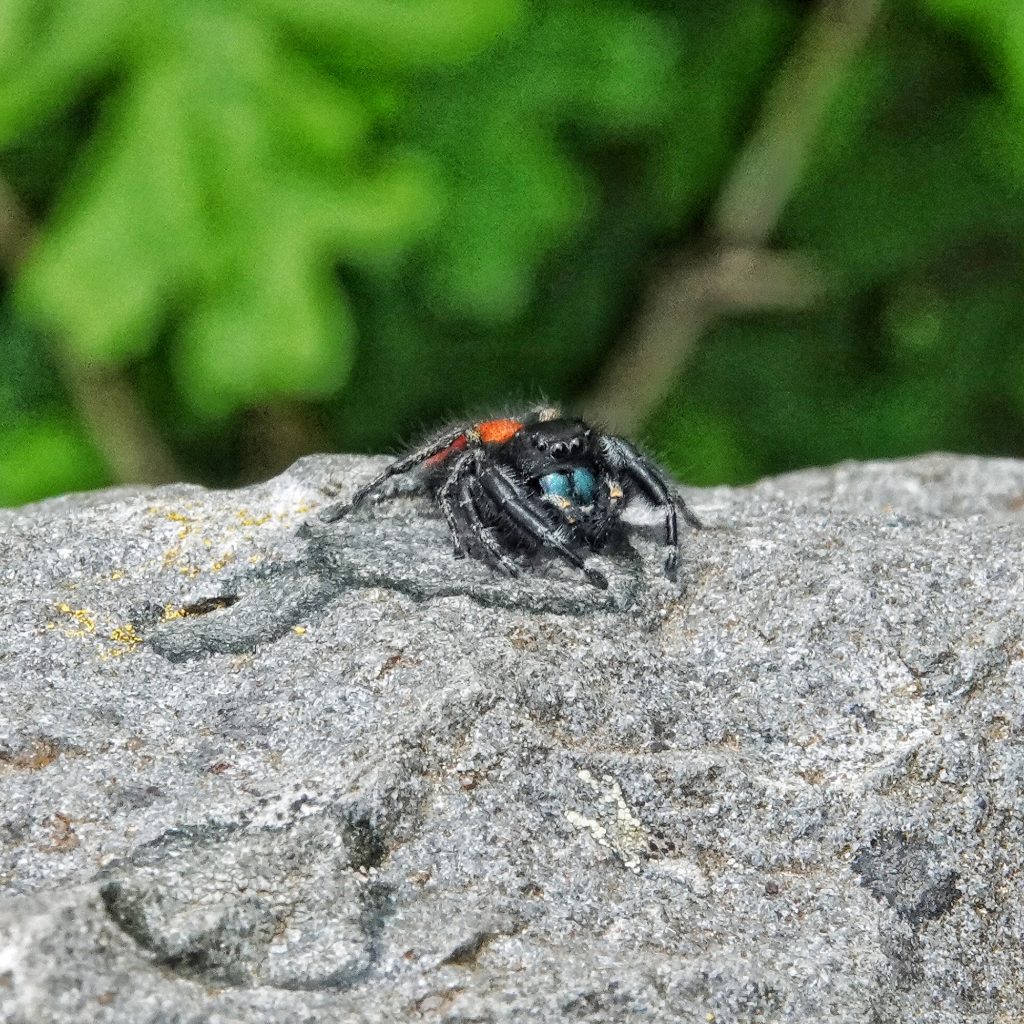
Etymology of names– Phidippus is from the Greek word for ‘one who spares horses, and was also the name of a slave who was physician to King Deiotaros in Cicero’s speech ‘De Rege Deiotaro’, though what any of this may have to do with colorful jumping spiders is unclear. The specific epithet johnsoni honors “…Prof. O. B. Johnson, of Washington University [sic], Seattle, W. T., to whose kindness we are indebted for an interesting collection of Washington Territory arachnida.” https://peckhamia.com/editions/Peckham%201883%20Descriptions%20of%20new%20or%20little%20known%20spiders%20of%20the%20family%20Attidae.pdf
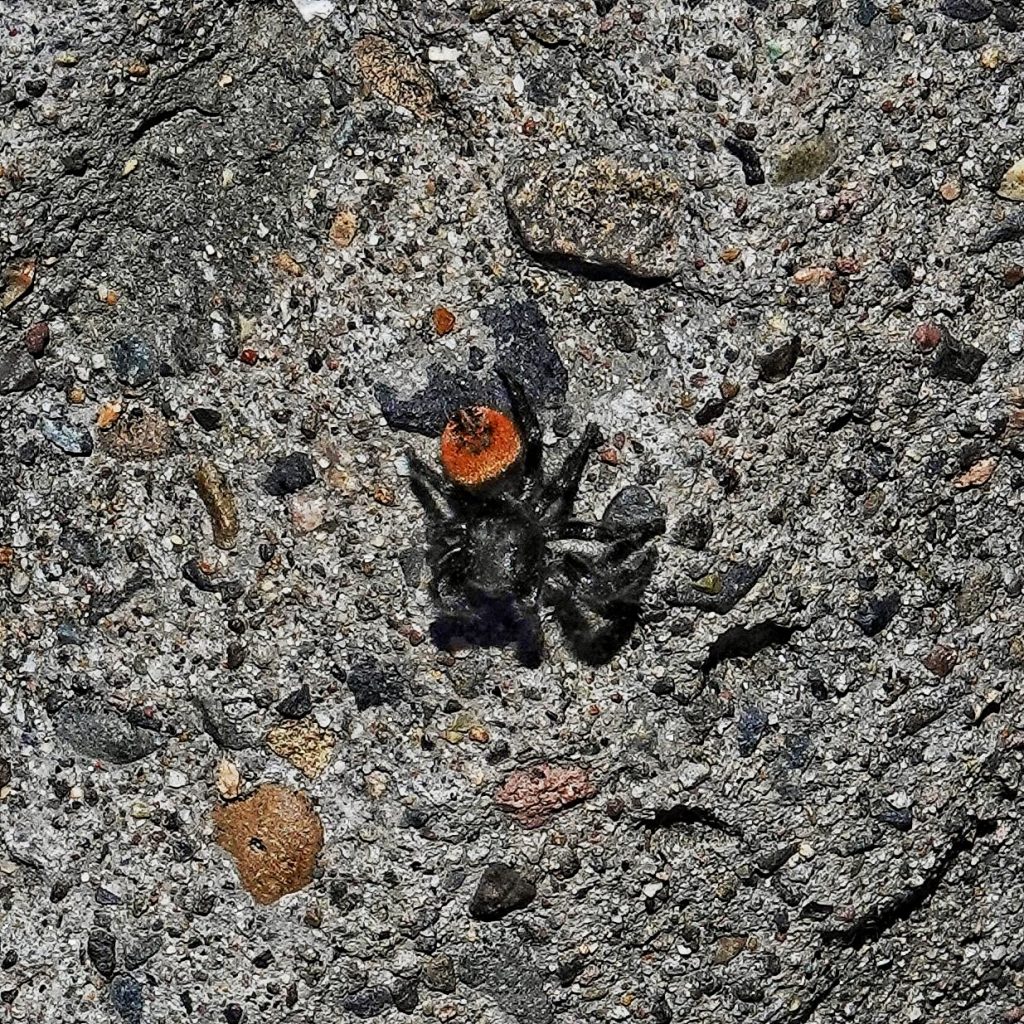
Species Phidippus johnsoni – BugGuide.Net
Genus Phidippus – BugGuide.Net
Phidippus Johnsoni – Red-Backed Jumping Spider – USA Spiders
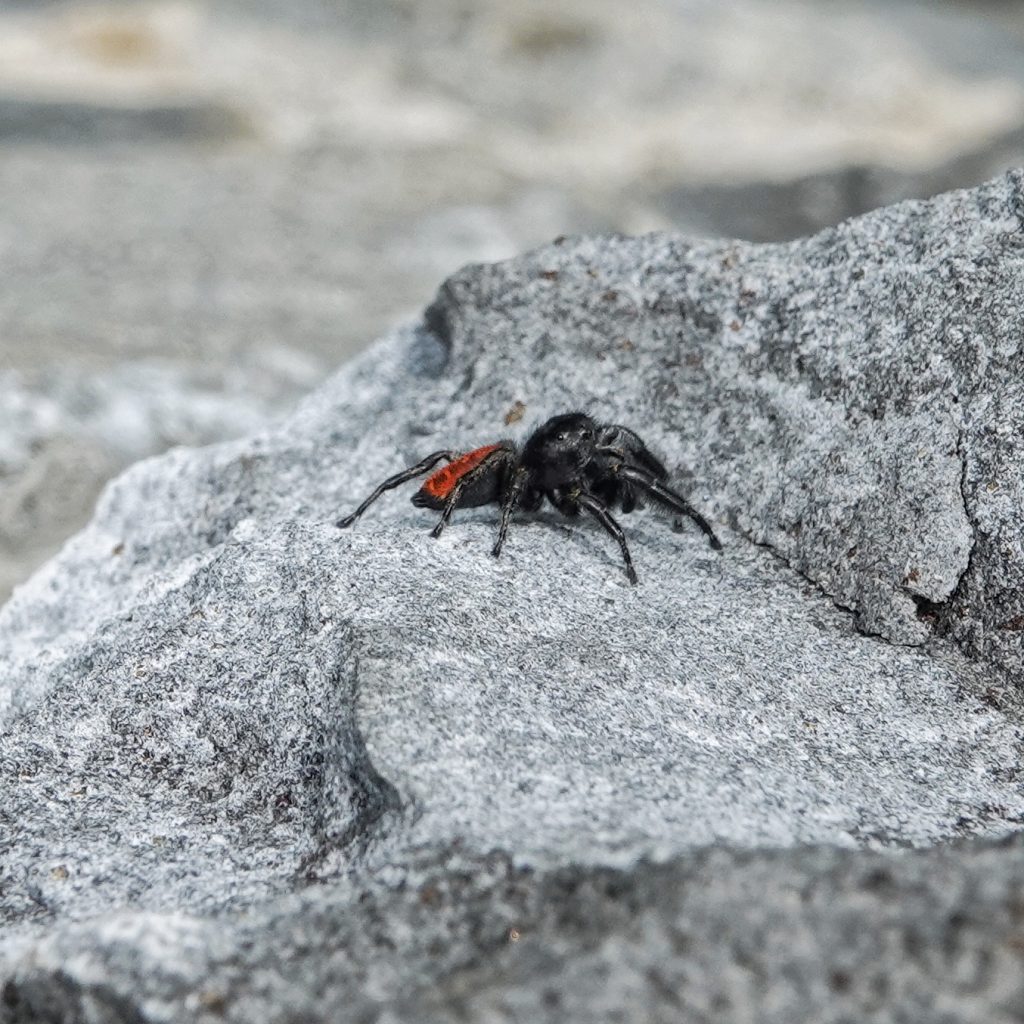
I’ve found that Phidippus are fun to engage with, but the red variety are like kitties who are flicking their tails. Not dangerous, but a little more adrenaline-raising.
Yes, they seem particularly fearless!